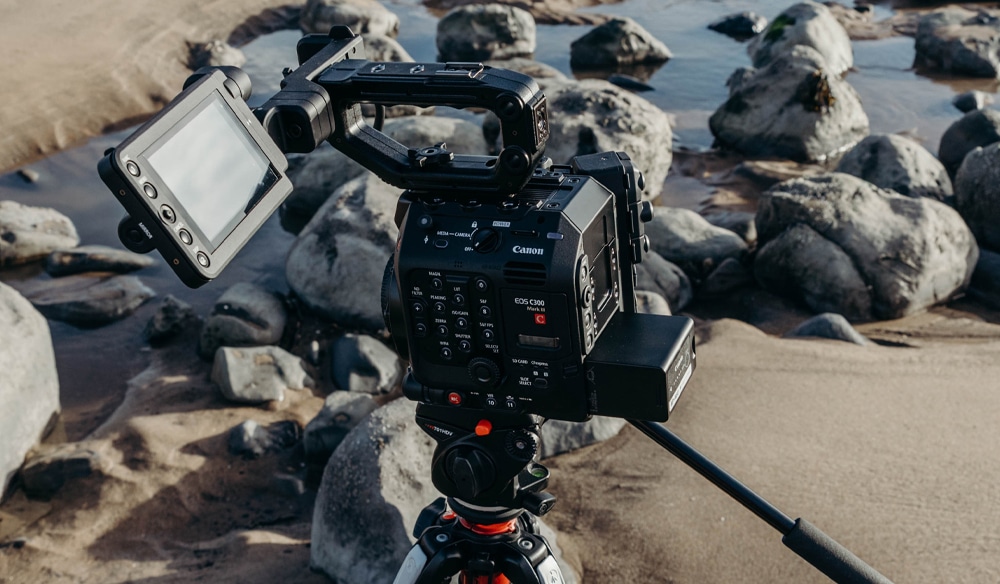Key Takeaways
-
Choosing the right video camera for wildlife filmmaking requires understanding camera specs and how they translate to field performance.
-
Key features include zoom capability, sensor size, frame rate, and low-light performance.
-
Durability and battery life are crucial for filming in nature’s unpredictable conditions.
-
Lenses and accessories can greatly enhance the quality and variety of wildlife footage.
-
While high-end equipment offers superior quality, there are excellent mid-range cameras that provide good value for money.
Capturing the Wild: Selecting the Right Video Camera
When it comes to filming wildlife, the camera you choose becomes your most trusted companion. It’s the tool that helps you capture the fleeting moments and breathtaking behaviors of nature’s creatures. But with so many options on the market, picking the perfect one can feel like finding a needle in a haystack. Let’s narrow down the choices and focus on what really matters for wildlife filmmaking.
What Makes a Camera Ideal for Wildlife Filmmaking
The ideal camera for wildlife filmmaking combines powerful zoom, robust build, and high image quality with ease of use. It must be ready to endure the elements and have enough battery life to last through long shooting days. But most importantly, it must capture sharp, clear footage of wildlife, which is often fast-moving and found in challenging lighting conditions.
Factors to Consider Before Purchase
Before you even begin to compare camera models, consider the environments you’ll be filming in and the types of animals you want to capture. Will you be in the damp rainforests or the dusty savannah? Are you focusing on nocturnal creatures or birds in flight? These questions will guide your decision on features like weather sealing, low-light performance, and frame rate.

“Best Cinema Cameras for Your Next …” from www.premiumbeat.com and used with no modifications.
Zooming in on Features: Camera Specifications
Let’s dive into the nitty-gritty of camera specs. The right features can make the difference between a missed opportunity and a stunning wildlife shot.
Sensor Size and Image Quality
The sensor is the heart of the camera, and its size is directly related to image quality. Larger sensors generally provide better image quality, especially in low-light conditions. They also offer a shallower depth of field, which can help isolate your subject from the background, making your wildlife subject stand out.
Autofocus Speed and Reliability
Wildlife rarely stays still for long, so a camera with fast and reliable autofocus is essential. It should quickly lock onto moving subjects and track them accurately as they move through the frame. This is particularly important when filming birds or fast-moving predators.
Frame Rate and Slow Motion Capabilities
High frame rates are a must for capturing the swift action of wildlife. The ability to shoot in slow motion can reveal the beauty and intricacy of animal movements that are too quick for the naked eye to appreciate. Look for a camera that offers a variety of frame rates to give you flexibility in your filmmaking.
In the Field: Camera Performance in Nature
Once you’ve selected a camera with the right specifications, it’s time to consider how it will perform in the wild. Nature is unpredictable, and your camera needs to be a reliable tool that can handle whatever conditions you might encounter.
Handling Tough Weather Conditions
Whether it’s the relentless humidity of the rainforest or the freezing temperatures of the Arctic, your camera must be up to the task. Weather sealing is not just a nice-to-have; it’s a necessity for protecting your gear from moisture, dust, and sand. Cameras with a robust build and weatherproofing will endure these tough conditions, allowing you to focus on getting the shot.
Remember, extreme temperatures can also affect camera performance. In cold environments, battery life is significantly reduced, while in hot climates, cameras can overheat. Choose a camera known for its resilience in a range of temperatures to avoid these issues.
Battery Life and Power Options for Extended Shoots
There’s nothing worse than running out of battery during a once-in-a-lifetime sighting. Long battery life is crucial, so check the expected battery duration and consider carrying spares. Additionally, some cameras offer power options like battery grips or the ability to charge via USB, which can be a lifesaver when you’re miles from an outlet. For more insights, consider reading about buying a camera for filming wildlife which may offer additional tips on power solutions.
Getting Closer: Lenses and Accessories
While the camera body is important, the lenses and accessories you choose can greatly enhance your ability to capture stunning wildlife footage.
Choosing the Right Lens for Distance Shooting
Wildlife often keeps its distance, so a lens with a long focal length is essential. A telephoto lens, preferably with image stabilization, will allow you to shoot clear, stable footage from afar. Remember, the more you can zoom, the closer you’ll get to the action without disturbing the natural behavior of your subjects.
Essential Accessories for Wildlife Filmmakers
Besides a good lens, several accessories are crucial for wildlife filmmaking. A sturdy tripod or monopod will keep your shots steady in the field. For tracking animals on the move, consider a fluid head for smoother panning. And don’t forget about protective gear for your equipment, like rain covers and hard cases.
The Budget Frontier: Cost vs. Quality
Investing in a video camera for wildlife filmmaking often involves balancing cost against quality. Fortunately, there are options for every budget.
Mid-range cameras can offer the best of both worlds, providing good image quality and necessary features at a more affordable price. These cameras often have the advantage of being more user-friendly, too, which is great for those who are still honing their skills.
However, if you’re aiming for professional-grade footage or need advanced features, then high-end equipment might be the right choice. These cameras come with larger sensors, higher frame rates, and superior build quality that can withstand the rigors of wildlife filmmaking.
Finding Value in Mid-Range Cameras
Mid-range cameras are a sweet spot for many wildlife filmmakers. They typically offer solid performance and durability without the sticker shock of professional gear. Look for a camera that has a strong optical zoom, good low-light capabilities, and robust construction. It’s possible to find cameras in this range that shoot in 4K, offering a great compromise between quality and cost.
When to Invest in High-End Equipment
If you’re committed to wildlife filmmaking, investing in high-end equipment can be worthwhile. These cameras will not only give you the best image quality but also provide features like high dynamic range (HDR) and advanced color grading options. Keep in mind, though, that these cameras often require a deeper understanding of videography principles to make the most of their capabilities.
Post-Production and Storage
Once you’ve captured your footage, you’ll need to think about post-production and storage. This stage is just as important as the filming itself.
File Formats and Storage Solutions
Different cameras produce different file formats, which can affect your workflow and storage needs. Raw footage offers the highest quality and flexibility for color grading but requires a lot of storage space and more intensive editing. Compressed formats like MP4 are easier to handle but offer less flexibility in post-production.
For storage, you’ll want fast, reliable, and high-capacity memory cards for the field, and robust external hard drives or solid-state drives for archiving your footage.
Editing Software for Wildlife Videos
Editing software is where your footage comes to life. Choose a program that matches your skill level and editing needs. Some popular options include Adobe Premiere Pro, Final Cut Pro X, and Davinci Resolve. Each offers a range of tools for cutting, color correction, and adding effects to your wildlife films.
Step by Step: Starting Your Wildlife Filmmaking Journey
Embarking on a wildlife filmmaking journey is an exciting venture. It’s not just about the gear; it’s also about developing your skills and understanding of the natural world.
Learning the Basics of Wildlife Videography
Start by getting comfortable with your camera’s basic functions. Practice shooting in different conditions and learn how to adjust settings like ISO, aperture, and shutter speed on the fly. Study animal behavior to anticipate action and understand the best times and places to film. The more you know, the better your chances of capturing compelling footage.
Practical Exercises to Enhance Your Skills
To refine your wildlife filmmaking skills, engage in practical exercises. Try filming different types of movements, from the slow progress of a snail to the rapid flight of a bird. Experiment with various lighting conditions, from the bright midday sun to the soft glow of dusk. Each scenario will teach you how to adapt your camera settings and techniques to capture the best footage possible.
Additionally, practice using your accessories. Master the art of stabilizing your shots with a tripod or monopod. Learn how to pack and set up your equipment efficiently, so you’re always ready when the perfect shot presents itself. Remember, practice makes perfect, and the more you film, the better you’ll become at anticipating and capturing wildlife moments.
Don’t forget to review your footage critically. Analyze what worked, what didn’t, and think about how you can improve next time. This self-critique is invaluable for your growth as a wildlife filmmaker.
Frequently Asked Questions
Now, let’s address some common queries you might have about wildlife filmmaking.
Can I Use a Standard DSLR for Wildlife Filmmaking?
Absolutely! Many standard DSLRs are equipped with video capabilities that are suitable for wildlife filmmaking. The key is to ensure that your DSLR has the necessary features such as a good autofocus system, the ability to shoot at high frame rates for slow-motion footage, and a sensor that performs well in various lighting conditions.
However, keep in mind that DSLRs may not have the same level of weatherproofing and battery life as some camcorders or cinema cameras designed specifically for video.
How Important Is 4K Video for Wildlife Videography?
4K video is becoming increasingly important for wildlife videography. It offers four times the resolution of Full HD, which means you can capture more detail and enjoy a higher quality image. This is especially useful when filming wildlife, as it allows you to crop into the image in post-production without losing quality.
That said, 4K files are larger and require more storage space and processing power to edit. If you’re just starting out or if your final output doesn’t require 4K, Full HD may still serve your needs well.
What’s the Best Way to Film Nocturnal Wildlife?
To film nocturnal wildlife, you’ll need a camera with excellent low-light capabilities. Look for cameras with larger sensors and lenses with wide apertures to capture as much light as possible. Some cameras also offer built-in infrared (IR) night vision, which can be a game-changer for filming in complete darkness.
Using additional IR lights can also illuminate your subjects without disturbing them, as many animals cannot see IR light.
Do I Need a Gimbal for Wildlife Videography?
While not essential, a gimbal can be a valuable tool for wildlife videography. It stabilizes your camera, allowing you to capture smooth, cinematic shots, especially when you’re on the move. If you plan to film while walking or from a vehicle, a gimbal can help reduce shake and improve the quality of your footage.
However, for static shots or when you’re waiting for wildlife to appear, a good tripod or monopod might be sufficient and more practical.
How Can I Attract Wildlife for Filming?
Though the question may be how not to scare off wild animals, attracting wildlife for filming should be done responsibly and ethically. Use natural attractants like bird feeders or water baths. Research the natural behaviors and habitats of the wildlife you wish to film and position yourself accordingly. Patience is key; often, you’ll find that staying quiet and still will encourage wildlife to come to you.
Remember to respect wildlife and their environment. Never bait or disturb animals to get a shot. Ethical practices not only ensure the well-being of wildlife but also contribute to the authenticity and quality of your filmmaking.
In conclusion, choosing the right video camera for wildlife filmmaking is a crucial step in capturing the beauty and wonder of the natural world. By understanding camera specs, assessing field performance, and selecting appropriate lenses and accessories, you can find a camera that fits your needs and budget. With practice and dedication, you’ll be well on your way to creating stunning wildlife films that inspire and educate others about the wonders of nature.




